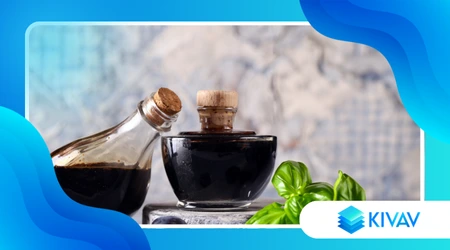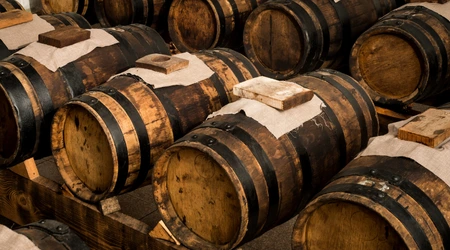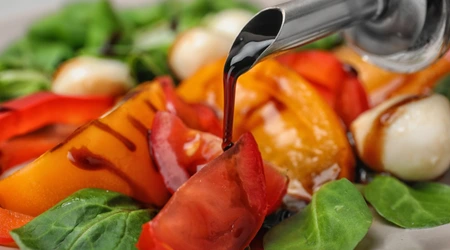Modena DOP balsamic vinegar: how to recognize the authentic one

THE'Modena PDO balsamic vinegar It is a jewel of the Emilian tradition, a symbol of excellence and craftsmanship.
Announcements
But how do you distinguish the authentic from the imitations? In a world of misleading labels, recognizing true balsamic vinegar requires attention and knowledge.
This article will guide you, with clarity and passion, to identify the genuine product, exploring history, production, and practical details.
Get ready to discover a condiment that is much more than just vinegar: it is a centuries-old art, carefully guarded.
Why settle for an imitation when you can taste the original? Follow us on this journey through flavors and traditions, to become a true connoisseur.
Announcements
The story behind the authenticity
Immerse yourself in the history of theModena PDO balsamic vinegar It means travelling back in time to Roman times.
Cooked must, the basis of balsamic vinegar, was already used as a condiment. During the Renaissance, the Este family elevated this product to a symbol of prestige, reserving it for nobles and rulers.
Documents from 1046 attest to its presence in Modena, but it was in the 19th century that the techniques were codified.
++ Traditional Modena balsamic vinegar: a precious condiment worth knowing about.
In 1862, Francesco Aggazzotti described the traditional method, still followed today. This legacy makes balsamic vinegar a cultural heritage, protected by the DOP (Protected Designation of Origin) since 2000.
Tradition isn't just folklore: it guarantees quality. Only the Modena vinegar producers, with their unique microclimate, produce authentic vinegar. Each bottle reflects centuries of knowledge, passed down with dedication.

The specification: the guarantee of quality
What makes theModena PDO balsamic vinegar Unique? The production specifications are rigorous and non-negotiable.
It requires local grapes, such as Lambrusco and Trebbiano, and a minimum aging of 12 years for the Affinato, 25 for the Extravecchio.
The process takes place in barrels made of various woods (oak, cherry, chestnut), with annual racking. No additives are permitted: only naturally fermented cooked must. This distinguishes the DOP from the IGP, which may contain wine vinegar.
see also: Italian truffles: white or black, how to use them without waste
According to the Protection Consortium, only 100 certified producers operated in Modena in 2024. Certification guarantees authenticity but requires strict controls by MIPAAF experts.
Each vinegar factory imparts a unique character, thanks to its woods and microclimate. The production specifications are the passport to excellence, a compass for consumers.
How to read the label
The label is the first clue to recognize theModena PDO balsamic vinegarLook for the exact wording: “Traditional Balsamic Vinegar of Modena DOP”.
Beware of imitations that use vague terms like “balsamic” or “Modena” without DOP.
The bottle must be 100 ml, shaped like an inverted tulip, designed by Giorgetto Giugiaro. Each bottle has a unique serial number, issued by the Consortium.
Also check the indication "Affinato" (12 years) or "Extravecchio" (25 years). Products aged less than this are not DOP. The label is your guide: follow it carefully.
A practical example: a label that says "Aceto Balsamico di Modena" without "Tradizionale" or "DOP" is probably IGP, which is less valuable. Read carefully and avoid traps.
Organoleptic characteristics: the taste of authenticity
Taste theModena PDO balsamic vinegar It's a unique sensory experience. The color is a deep, intense brown with shiny highlights. The syrupy consistency is never watery: a drop stays firm on the spoon.
The aroma is complex, with notes of ripe fruit, wood, and a pleasant acidity. On the palate, the balance between sweet and sour is perfect, with a lingering aftertaste. Each vinegar producer offers unique nuances.
A practical test: pour a drop on Parmigiano Reggiano. If it enhances the flavor without overpowering it, it's authentic. Imitations will be harsh or cloying.
Tasting is like listening to a symphony: every note, from the wood to the must, must harmonize. Only DOP delivers this complexity.
Where to buy it and what to avoid
Find theModena PDO balsamic vinegar It requires caution. Buy it from certified vinegar producers, specialized shops, or official websites like balsamico.it. Avoid supermarkets, where PGI products or imitations prevail.
The price is an indicator: a DOP Affinato starts at 100 euros per 100 ml, the Extravecchio exceeds 300. Prices that are too low signal fraud: the aging time is expensive.
Visit a vinegar producer, like Acetaia Valeri, to purchase directly. Guided tastings help you understand the quality. Check the serial number online.
Be careful with terms like "balsamic dressing" or "glaze": these are not DOP. Choose wisely, invest in authenticity.
Common mistakes to avoid

Confuse theModena PDO balsamic vinegar With the PGI, this is the most common mistake. The PGI, which is less expensive, contains wine vinegar and is only aged for 60 days. It lacks the complexity of the PDO.
Don't trust large or cheap bottles: the DOP is only available in 100 ml bottles. Also avoid products with additives, such as caramel, which are not permitted in the regulations.
A real-life example: a tourist buys a 500ml "balsamic" for €20, thinking it's DOP. The result? An industrial IGP. Do your research before buying.
Finally, don't use it in cooking: heat destroys its aromas. Use it raw, on simple dishes, to appreciate its magic.
The cultural and gastronomic value
THE'Modena PDO balsamic vinegar It's not just a condiment: it's a symbol of Modena. In 2025, the Consortium will promote the product at international events, such as the Summer Fancy Food Show in New York.
In the kitchen, it enhances simple dishes: a few drops on fresh strawberries or vanilla ice cream create surprising contrasts. It's also a digestif, best enjoyed by the teaspoon.
Its limited production makes it a precious gift. Each bottle is a piece of history, a bridge between past and future.
Imagine a craftsman who guards a battery of barrels for decades: this is the heart of the PDO, a treasure to be treasured.
Table: Differences between DOP and IGP
| Characteristic | Traditional Balsamic Vinegar of Modena DOP | Balsamic Vinegar of Modena PGI |
|---|---|---|
| Ingredients | Only cooked must | Cooked must + wine vinegar |
| Aging | Minimum 12 years (Affinato), 25 (Extravecchio) | Minimum 60 days |
| Bottle | 100 ml, inverted tulip | Various sizes |
| Average price (100 ml) | 100-800 euros | 5-20 euros |
| Certification | Protection Consortium, MIPAAF | Less rigid controls |
Practical tips for use and storage
Use theModena PDO balsamic vinegar It demands respect. Don't heat it: raw, it enhances carpaccio, risotto, or cheese. A drop is enough to transform a dish.
Store at room temperature, away from light and heat. A tightly closed bottle guarantees a virtually unlimited shelf life, thanks to its natural acidity.
Try this unique pairing: a drop on fresh oysters. The acidity of the balsamic enhances the saltiness of the shellfish, creating an explosion of flavor.
If it crystallizes, immerse the bottle in warm water. This is a sign of quality, not a defect. Always use non-metallic spoons.
One last tip: experiment in moderation. DOP is the star, not the supporting actor. Let its flavor tell its own story.
Conclusion: an investment in taste
Recognize theModena PDO balsamic vinegar It's an act of love for tradition and quality. It's not just a purchase, but an experience that connects you to the Modena area.
Every drop embodies centuries of care, a flavor unlike any other. In 2025, with the growing popularity of Made in Italy, choosing authenticity is a conscious gesture.
Invest in a certified bottle, savor it carefully, share it with those who appreciate excellence.
Don't be fooled by imitations: real balsamic vinegar is an accessible luxury, a journey into the heart of Emilia. What will your next dish be enhanced with this black gold?
Frequently Asked Questions
1. What is the difference between DOP and IGP?
The DOP is produced only with cooked must, aged for at least 12 years, exclusively in Modena. The IGP uses wine vinegar and ages for 60 days.
2. Can I use DOP in cooking?
No, heat alters its flavors. Use it raw on dishes like salads, cheeses, or desserts.
3. Why is DOP so expensive?
The long aging process (12-25 years), limited production, and rigorous controls justify the price. It is a unique artisanal product.
4. How do I store the DOP?
At room temperature, in a cool, dark place. Do not refrigerate, and use a non-metallic spoon to serve.
